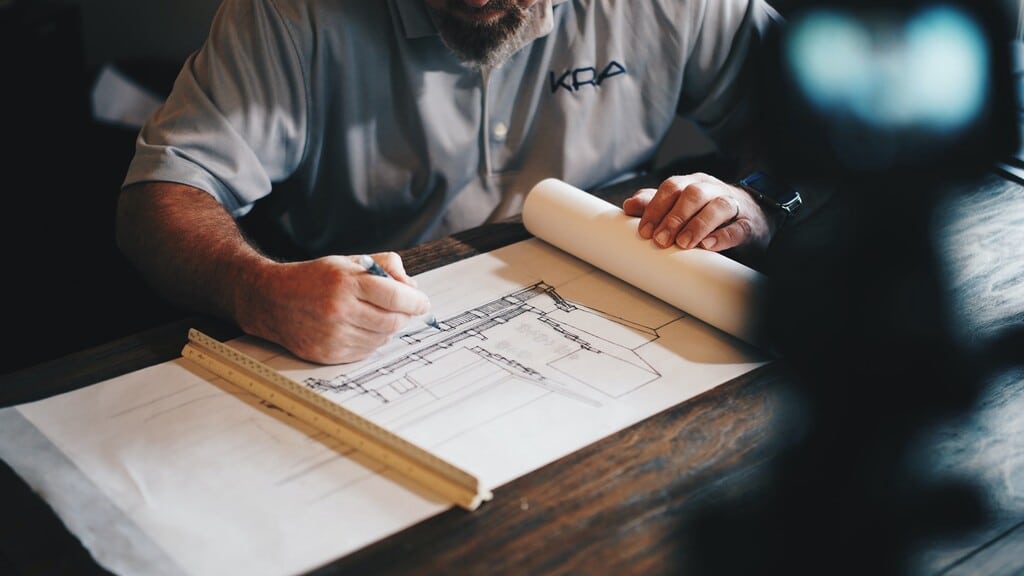Hiring the right architectural designer can make all the difference in turning your vision into reality-whether you’re building a new home or renovating an existing space. The process involves more than just choosing someone with creative ideas; it’s about finding a professional who understands your needs, communicates clearly, and fits your budget.
With so many options available, knowing what to look for and how to collaborate effectively is essential. In this guide, we share five expert tips to help you hire the best architectural designer for your project and ensure a smooth, successful partnership from start to finish.
Read a Designer’s Portfolio
Pay attention to what niche the person is working in. For example, if there are ten objects in the portfolio, eight of which are residential buildings, and two are apartments, it is quite obvious that you have a professional in residential interiors. If three projects are residential, four are public, two are fitness centers, and one is generally conceptual, on the one hand, this can tell about the diversity of a person, and on the other, you will hardly understand what is closer to him.
Price Matters Both Ways
You shouldn’t settle for a very low cost of the project. A professional will never set a price lower than the market price, except in special cases. A low price indicates that a person has no orders or low self-esteem, which cannot but affect the quality of work. You can check the prices on commercial design at Engre.co to familiarize yourself with the international market.
Don’t ask designers to knock out materials for you at the lowest prices. The main bread lies not in projects, but in working with suppliers. Moreover, people often think that designers “rip off” clients. I want to reassure you: finding a good supplier, establishing contact with him, completing several orders, understanding his strengths and weaknesses is a job and a lot of work that can last for years. You are not buying discounts, you are buying brains.
Praise more often for the work done and do not expect the designer to come up with everything for you ⏤ to communicate. If you see that a person cannot come up with something very creative, but offers a simple solution, this does not mean that he has no imagination. An architect is a family doctor, he does what you cannot, which is why you invited him. Try to become his friend, because, to make the right interior, a professional must think like you for some time.
Make a Project Description

The description is a listing of all the wishes of the customer for the project. For an architect to immediately start working in the right direction, it is important to compile this list with great care. This document must be unambiguous, i.e. he should describe the key requirements for the project, outline the acceptable boundaries (stylistic, technical, and financial) and convey the personal feelings of the client.
The description of the project should also include its main function, which it will perform during operation, the design direction in which the customer sees it, how to make decisions in case of controversy, a realistic time frame, and budget. But do not be afraid that such a description should be solely by the customer.
This is the result of his joint work with the architect, in which, nevertheless, the most detailed interior ideas of the customer are paramount. An architect can help formulate them, but he cannot come up with a project without knowing the wishes, preferences, and motivations of his client. By the way, this can be high-time for 3D architectural rendering services. You can read this article to find out more about this type of service.
Relationship Between the Customer and the Architect

After choosing an architect, the relationship with the client is formalized in the form of a contract. Various subtleties are depending on the type of work (for example, the object is being built from scratch or the work is being carried out in an operating building), but its main components are unchanged.
These include such parameters as a description of works and services, calculation of the cost and duration of all works, the possibility of involving any third-party consultant, architectural insurance, and the period of the architect’s responsibility, as well as a description of the dispute resolution procedure.
Under the contract, the architect undertakes to provide services and perform work honestly and in good faith, if necessary, represent his customer and advise him on issues within his competence, constantly monitor the compliance of the work with the agreed deadlines, scale, and cost.
However, RIBA recommends a construction contract. It is designed to save the parties from all sorts of surprises that were not taken into account when formalizing the project. These are, for example, unpredictable soil behavior. This, in turn, can impose constraints on the resulting appearance of the object. A well-drafted contract between the customer and the construction company will serve as additional insurance against unforeseen circumstances.
Build on Budget

According to statistics, about 5-10% of the total amount plann for repairs should be pledged for the services of an architectural designer. At the same time, each designer calculates the cost of his services differently: someone already has a ready-made price list, and someone prefers to name the price after the approval of the terms of reference. In any case, the pros will never bid less than the market price. Too low prices can hide incompetent employees or scammers. The more expensive the renovation is, the higher the design rate is.
Most often, designers proceed from the price of services per 1 m². Much depends on the region, the segment of housing (business or economy class), professionalism, work experience, and the complexity of the project itself.
Read more:-

